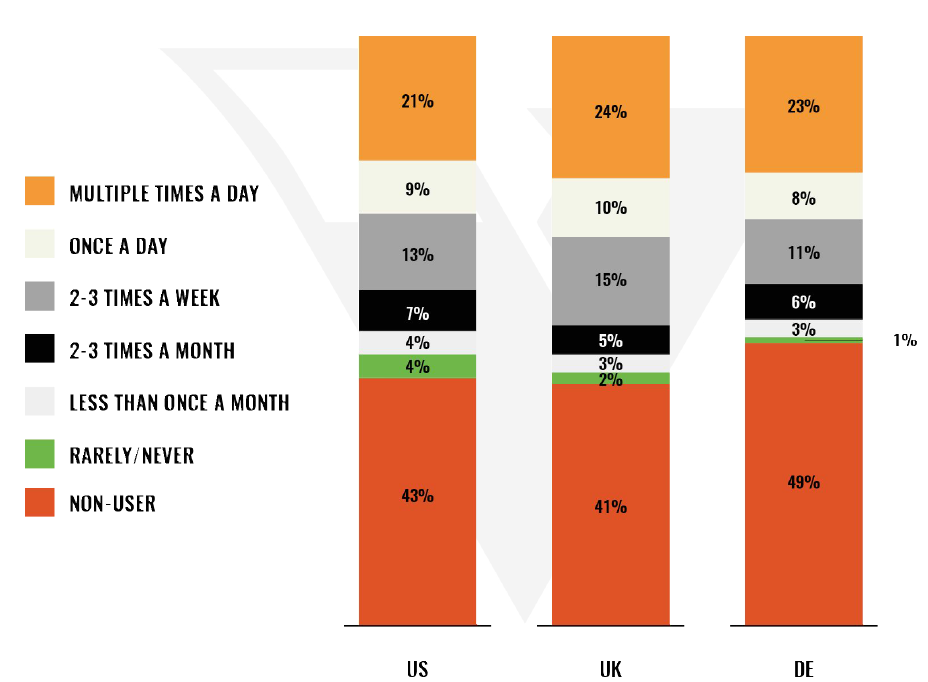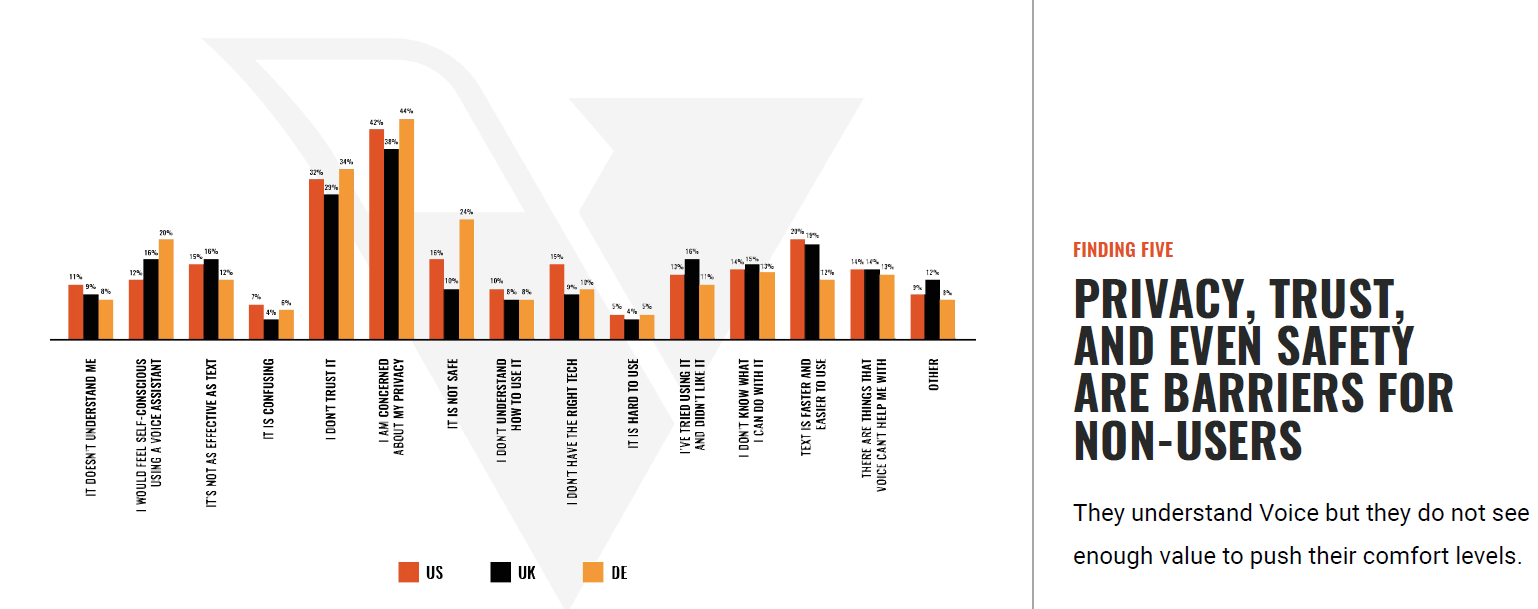Vixen Labs is a UK-based voice agency that consults with enterprises about AI-based conversational interfaces, from strategy to product builds. The company’s Voice Consumer Index 2021 research paper, produced with the Open Voice Network and research company delineate (lower-case “d” intentional), presumes an incoming era of conversational marketing.
The research was performed 14th-19th May 2021. In total 6,000 individuals aged 18+ were surveyed (2000 each in the UK, the US and Germany). Samples in each country were controlled with representative quotas among each age group, region and ethnicity in the US.
Jon Stine, Executive Director of Open Voice Network, says “Voice will soon be a primary way consumers connect with the digital world, and a primary way that digital marketers will connect with consumers.”
A new Vixen Labs study, the Voice Consumer Index, supports this rationale and strives to understand how people use voice now, to inform brands in building their AI voice strategies. As such, it delivers interesting metrics around consumer adoption of conversational assistants across all devices.
A main thrust of the report examines the extent to which consumers search for, and purchase, products through conversational interfaces. The research reveals that over 30% of people in three markets (US, UK, Germany [DE]) are already using voice interfaces in daily life.
 Even broader reach is revealed when “daily use” is replaced by awareness — between 50% and 60% of respondents are aware of voice activated technology and use it with some frequency. Only 2-4% of respondents are not aware.
Even broader reach is revealed when “daily use” is replaced by awareness — between 50% and 60% of respondents are aware of voice activated technology and use it with some frequency. Only 2-4% of respondents are not aware.
That awareness is distributed widely across age groups, depending on device and operating system brand. So, while 60% of 18-24 year olds in the U.S. use Siri (Apple), only 19% of that group uses Alexa (Amazon). In the 65+ club, Alexa is used by a plurality of 41%, while Siri drops to 28% and Google Assistant registered 23% usage. Those trends track across the UK and DE also.
What about hesitancy? “Privacy is a concern but not a barrier,” the report states — at least, among users. It’s a barrier to entry for non-users, along with related values of trust and safety. The UK is a little less worried than US and DE, but privacy is the biggest nerve wracker among non-users across the three regions:

We will revisit this report to look at more info — particularly the ways that audiences are using voice. Meanwhile, the study is available HERE.
